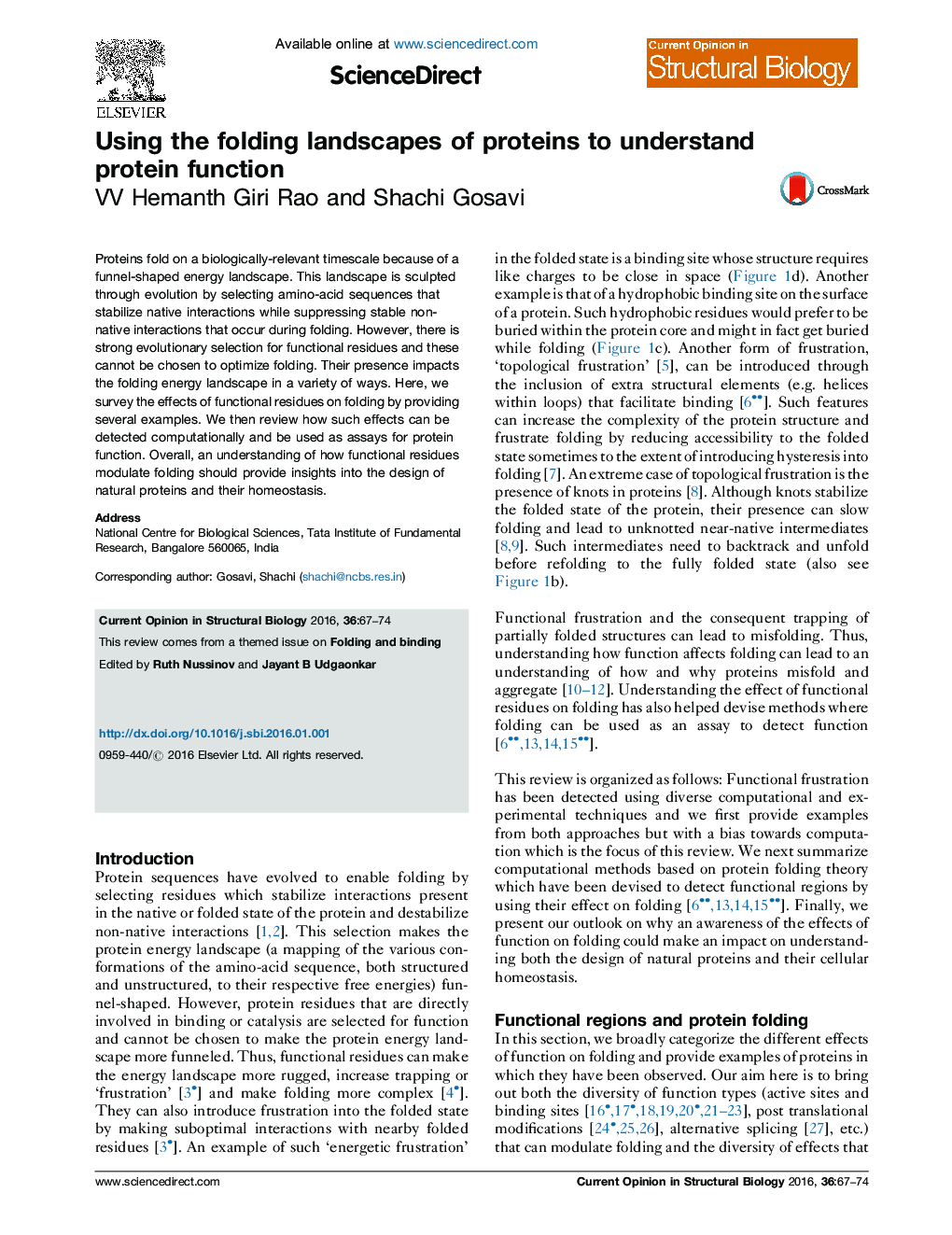| Article ID | Journal | Published Year | Pages | File Type |
|---|---|---|---|---|
| 8319774 | Current Opinion in Structural Biology | 2016 | 8 Pages |
Abstract
Proteins fold on a biologically-relevant timescale because of a funnel-shaped energy landscape. This landscape is sculpted through evolution by selecting amino-acid sequences that stabilize native interactions while suppressing stable non-native interactions that occur during folding. However, there is strong evolutionary selection for functional residues and these cannot be chosen to optimize folding. Their presence impacts the folding energy landscape in a variety of ways. Here, we survey the effects of functional residues on folding by providing several examples. We then review how such effects can be detected computationally and be used as assays for protein function. Overall, an understanding of how functional residues modulate folding should provide insights into the design of natural proteins and their homeostasis.
Related Topics
Life Sciences
Biochemistry, Genetics and Molecular Biology
Biochemistry
Authors
VV Hemanth Giri Rao, Shachi Gosavi,
